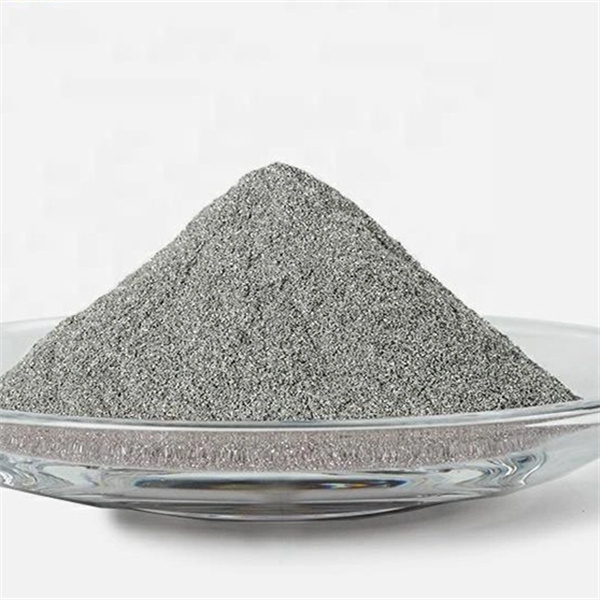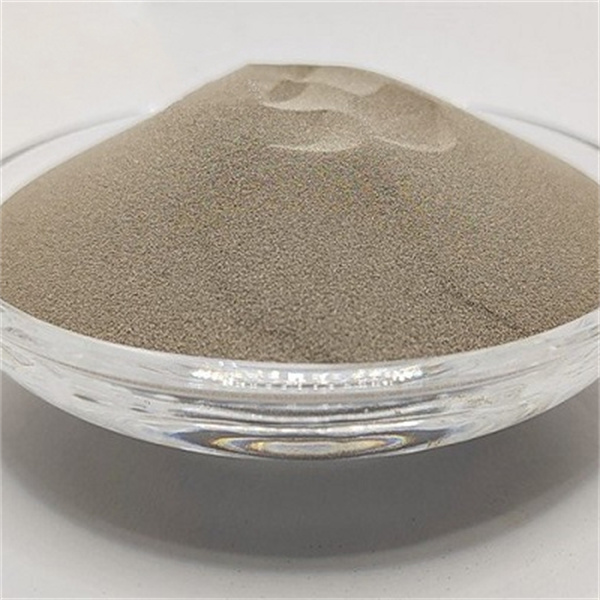概述 铬镍铁合金 3d 打印部件
Inconel 3D 打印部件是指使用增材制造(AM)方法用 Inconel 超合金粉末制造的部件。铬镍铁合金牌号具有优异的耐热性、耐腐蚀性和高强度,非常适合航空航天、发电和其他要求苛刻的应用。
铬镍铁合金 3D 打印部件的主要特性:
- 700°C 以上仍保持高强度
- 可抵御氧化、腐蚀等侵蚀性环境
- 直接从 CAD 模型生成复杂的几何图形
- 与减材加工相比,缩短了交货时间,降低了采购到飞行的比率
- 可根据需要选择铬镍铁合金 625、718 和其他合金
- 需要热等静压 (HIP) 来消除内部空隙
请继续阅读,了解有关常用铬镍铁合金、机械性能、后处理、用途和零件鉴定的更多信息。

合金类型
增材制造中常用的铬镍铁合金牌号包括
| 合金 | 镍含量 | 主要功能 |
|---|---|---|
| 铬镍铁合金 625 | 60% min | 优异的耐腐蚀性,抗氧化性高达 980°C |
| 铬镍铁合金 718 | 50-55% | 最高强度可保持至 700°C,具有时效硬化反应 |
| 铬镍铁合金 939 | 不适用 | 优异的粗化晶粒结构稳定性带来更高的最终使用温度 |
表 1:可用于 AM 加工的常用铬镍铁合金超耐热合金
与不锈钢相比,这些合金在受热和腐蚀情况下具有优异的性能。目前,铬镍铁合金 718 的应用最为广泛,但新牌号将进一步扩大其性能。
的特性 铬镍铁合金 3d 打印部件
铬镍铁合金 3D 打印部件的主要特性:
| 物业 | 说明 |
|---|---|
| 高温强度 | 时效硬化合金的强度可保持到 700°C |
| 热阻 | 工作温度可达 1000°C 以上 |
| 耐腐蚀性 | 适用于各种酸性海洋环境 |
| 抗氧化性 | 表面氧化铬保护层 |
| 抗蠕变性 | 高温负载下的抗变形能力 |
| 硬度 | 时效硬化后可达到洛氏硬度 C 40-45 |
表 2: 英科耐尔 AM 合金的机械和物理性能概述
强度、耐环境性和在极端温度下的稳定性的完美结合,使铬镍铁合金成为关键应用领域中用途极为广泛的材料系统。
印刷部件精度
英科耐尔 AM 合金可达到的尺寸精度和公差:
| 参数 | 能力 |
|---|---|
| 尺寸精度 | 打印的 ±0.3% 至 ±0.5% |
| 最小壁厚 | 0.020 英寸至 0.040 英寸 |
| 公差 | 普通 ±0.005 英寸 |
| 表面处理 | 印刷表面粗糙度可达 Ra 3.5 μm (140 μin) |
表 3: 铬镍铁合金 AM 零件的印刷精度和表面光洁度概览
机加工和精加工等后处理可进一步提高精度和表面光洁度。以上数据仅供参考,具体要求请与候选供应商讨论,以满足您的应用需求。
inconel三维打印部件的部件测试
要使 Inconel AM 组件具备最终使用的资格,需要标准测试协议:
| 测试 | 目的 | 抽样方法 |
|---|---|---|
| 化学分析 | 验证合金化学性质和微观结构 | 光学发射光谱、图像分析 |
| 拉伸试验 | 测量拉伸强度和屈服强度 | 标准 E8,国际标准 6892 |
| 应力破裂试验 | 确定随时间变化的断裂强度 | ASTM E292 |
| 断裂韧性 | 了解抗裂纹扩展能力 | ASTM E1820 |
| 腐蚀测试 | 评估材料在环境中的质量损失 | ASTM G31、ASTM G48 |
| 无损检测 | 检测表面/次表面缺陷 | 渗透检测、CT 扫描 |
表 4: 鉴定铬镍铁合金 AM 打印部件的常用测试方法
数据必须符合适用的行业规范,如 AMS、ASME、AWS 等,由最终应用和操作环境决定。与 AM 供应商讨论所需的验证测试。
应用
在苛刻环境中使用铬镍铁合金 3D 打印部件的行业:
| 行业 | 组件 | 益处 |
|---|---|---|
| 航空航天 | 涡轮叶片、火箭喷嘴 | 在高工作温度下保持强度 |
| 发电 | 热交换器、阀门 | 耐腐蚀,高温强度高 |
| 石油和天然气 | 井口部件、压裂部件 | 可承受恶劣的井下条件 |
| 汽车 | 涡轮增压器外壳 | 处理废热和废气 |
| 化学加工 | 反应容器、导管 | 抗腐蚀反应 |
表 5: 各行业使用铬镍铁合金 AM 零件情况概览
铬镍铁合金可生产轻质、高性能的部件,取代无法满足应用需求的传统制造硬件。
后处理 铬镍铁合金 3d 打印部件
铬镍铁合金 AM 打印部件的常见二次加工:
| 过程 | 目的 | 方法 |
|---|---|---|
| 热等静压 | 消除内部空隙,提高密度 | 高压高温惰性气体 |
| 热处理 | 调整微观结构并最终确定性能 | 固溶退火,合金特有的时效曲线 |
| 加工 | 提高尺寸精度和表面光洁度 | 数控铣削/车削中心 |
| 涂料 | 增强耐磨性、耐腐蚀性和耐热性 | 热喷涂、PVD、CVD 涂层 |
表 6: 推荐的铬镍铁合金 AM 打印部件后处理技术
几乎所有部件在使用前都要经过 HIP 和热处理。渗透测试或 CT 扫描等额外的表面下检查也是认证的依据。请与 AM 供应商讨论为您的部件量身定制的协议。
成本分析
| 参数 | 典型值 |
|---|---|
| 铬镍铁合金粉成本 | 每公斤 $100-500 |
| 买飞比 | 1.5 : 1 |
| 准备时间 | 打印部件需 4-8 周 |
| 打印机的使用 | 50-75% |
| 完工津贴 | 印刷部件成本的 30% |
表 7: 铬镍铁合金 AM 部件生产的成本因素
大量粉末重复使用有助于提高成本效益。机加工和涂层等表面处理步骤也会增加成本--预算比印刷成本高出 30% 或更多,具体取决于复杂程度。
优点和缺点
优势
- 可承受比不锈钢或钛合金高得多的工作温度
- 部件在整个温度范围内保持高强度
- 前所未有的冷却剂通道几何形状,可增强传热效果
- 印制部件的机械性能可媲美或超过铸造铬镍铁合金部件
- 印刷五金件比传统制造的要轻得多
- 购买飞行比接近 100%,很少浪费火药
- 按需数字库存可缩短交付周期
缺点
- 材料成本非常高,粉末每公斤约 $100 美元
- 系统生产率低,每天使用约 5 公斤粉末
- 需要对新部件和合金进行大量参数优化
- 航空航天和核能领域规定的广泛鉴定测试
- 专业调幅设备需要较高的操作技能
- 粉末重复使用次数最多只有 10-20 次,然后才能刷新
- 多孔性和残余应力要求进行 HIP 和精加工

常见问题
问:可以 3D 打印多大尺寸的铬镍铁合金部件?
答:最先进的系统最多可容纳直径 1000 毫米、高 600 毫米的部件。较大的部件必须分割成子组件。多激光平台将进一步扩大部件尺寸。
问:铬镍铁合金印刷需要特殊的设施或设备吗?
答:铬镍铁合金通常在惰性氩气室中进行打印,而不是使用过滤器或真空系统。此外,标准金属 AM 机器也适用,无需特殊添加。处理细小粉末需要小心谨慎,没有特定的房间要求。
问:Inconel AM 零件订单的交付周期是多长?
答:典型的报价交货时间约为 4-10 周,具体取决于部件尺寸、所选的后处理和测试。数字库存可减少延误,因此打印部件的发货速度比供应短缺的铸件快。
问:哪些行业能提供最好的铬镍铁合金 AM 商机?
答:航空航天、太空、石化和核能行业推动了铬镍铁合金等高性能合金的应用。医疗领域在设计经认证的植入体方面也有增长。标准不锈钢和工具钢部件现已商品化,因此更多的异种合金引起了人们的兴趣。
问:AM 是否能实现以前无法实现的任何新型英科耐尔应用?
答:AM 可以实现以前不可能实现的保形冷却通道和中空内部结构,从而增强狭小空间的热传导。在火箭和卫星顶端,也可以使用传统上重量过大或无法加工的部件。持续的研发将进一步拓展未来的能力。






